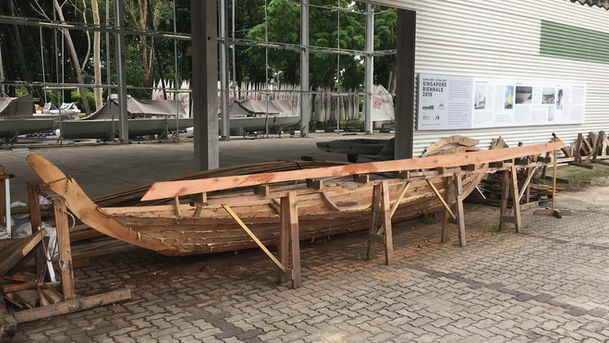top of page
Many Waters to Cross 2019
https://www.singaporeartmuseum.sg/art-events/events/dennis-tan-artist-in-progress-building-of-a-kolek
Commissioned for the Singapore Biennale 2019. Many Waters to Cross is a project centred on a traditional kolek boat that Tan built and sail-tested before the exhibition.Originally intended to be shown intact, the boat had to be cut in half to enter the museum—an act that became part of the work itself.The project considers labour, impermanence, and the quiet negotiations between making and unmaking.

bottom of page







